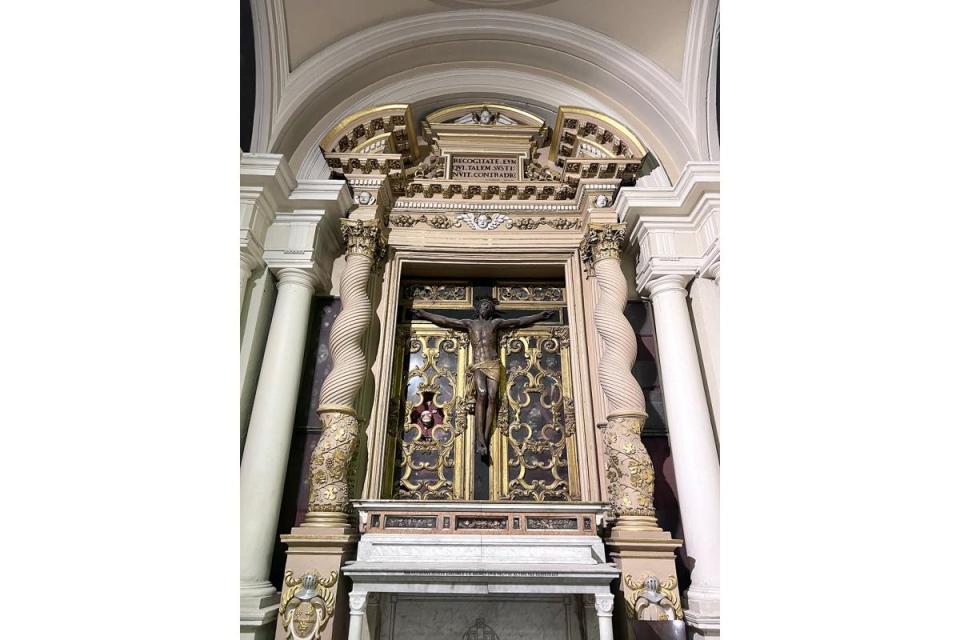Historic crucifix at the Jesuits’ church being restored
The work is being entrusted to Atelier del Restauro Ltd

The historic 17th-century wooden polychrome and gilded crucifix found in the Chapel of the Crucifix at the Jesuits’ church in Valletta, is undergoing a significant conservation and restoration project, the Jesuits’ Church Foundation has announced. This endeavour, sponsored by Tumas Group, also includes two large lunette paintings on canvas.
The Chapel of the Crucifix, situated on the left side of the main aisle of the Jesuits’ church, holds significant historical and religious value. Archival records from 1633 indicate that the chapel was granted to the noble families Xara and Bonici, and houses a collection of holy relics.
The centrepiece of this chapel is a large polychrome crucifix, believed to be the work of an important Roman sculptor from the early 17th century. This restoration project will focus on meticulous preservation techniques to ensure that the crucifix and its surrounding artworks, including the lunettes painted by Giovanni Nicolo Buhagiar, remain preserved for future generations to appreciate.
The work is being entrusted to Atelier del Restauro Ltd, a local company that is known for its expertise in conservation, ensuring that the crucifix and the lunettes are preserved with the utmost care and respect for their historical integrity.
 A detail of the crucifix.
A detail of the crucifix.The Jesuits’ church
The Jesuits’ church is one of Valletta’s oldest and largest churches, dating back to its original construction by the Jesuit order between 1593 and 1609.
The church, an architectural jewel adjacent to the Old University Building, played a crucial role in Malta’s early academic life as part of the Collegium Melitense. Following a destructive explosion in 1634, the church was modified under the direction of Francesco Buonamici, incorporating baroque elements that enhanced its grandeur.
The conservation of this historic building and its collection has only been possible thanks to the establishment in July 2021 of The Jesuits’ Church Foundation, when the Archdiocese of Malta and the government joined forces to safeguard the church, together with its adjoining oratories, ensuring its conservation as a historic and architectural monument, and as a sacred place of worship.
Through this agreement, the foundation embarked on a journey committed to the long-term preservation and accessibility of this important historic religious heritage site, with an unwavering dedication to safeguard this sacred space and its religious artistic patrimony, to honour the legacy of ancestors, and to sustain the spiritual sanctuaries that have stood as a beacon of faith guiding Europe for centuries.